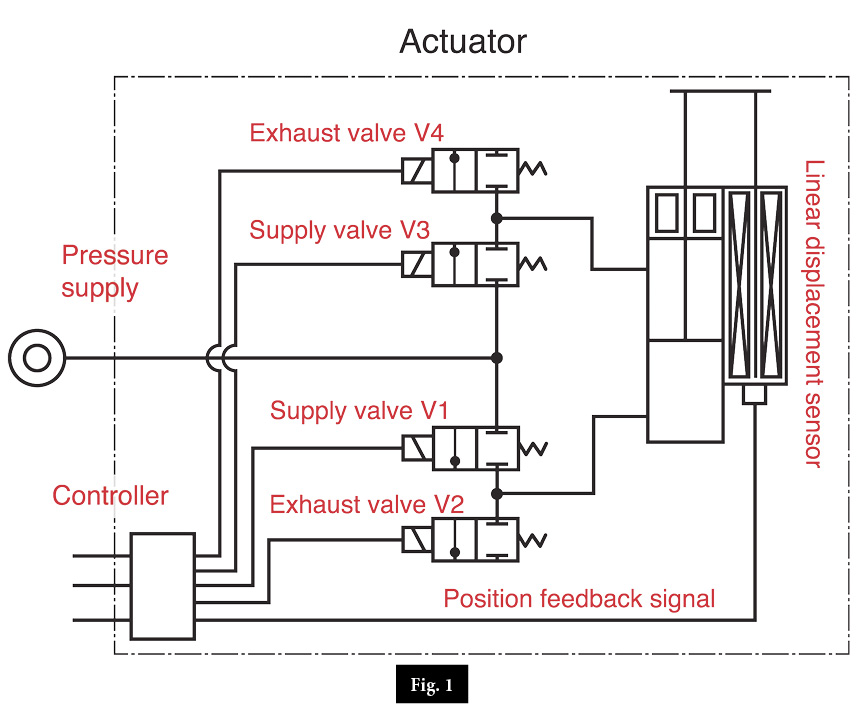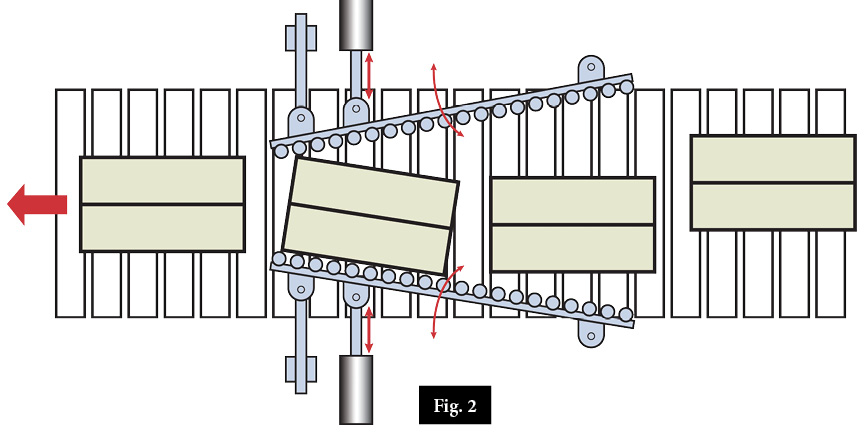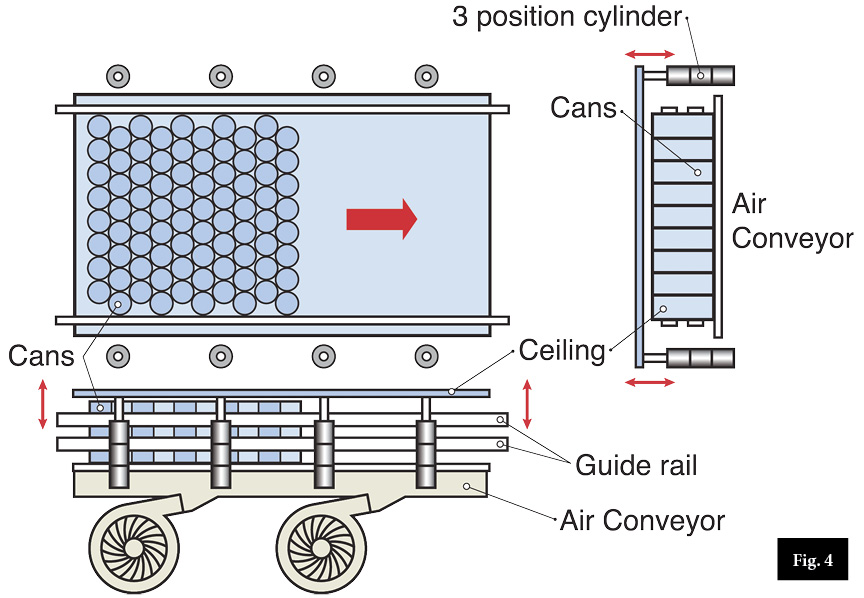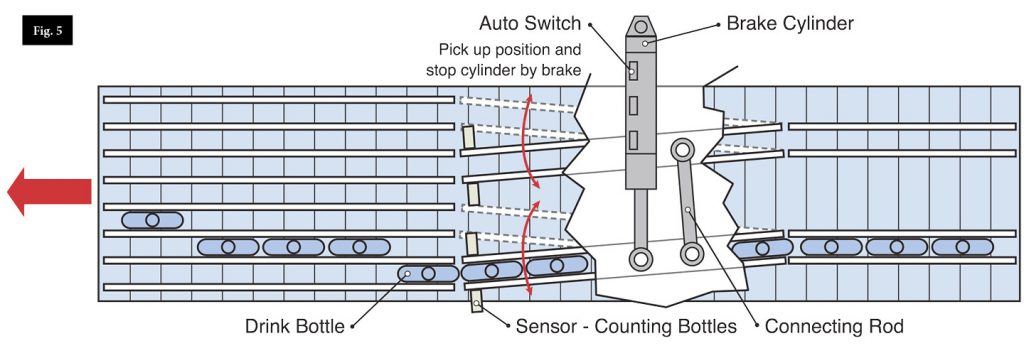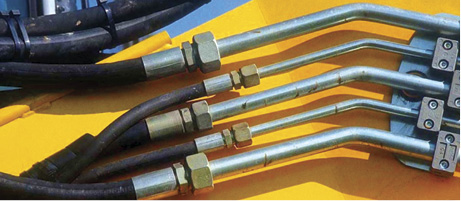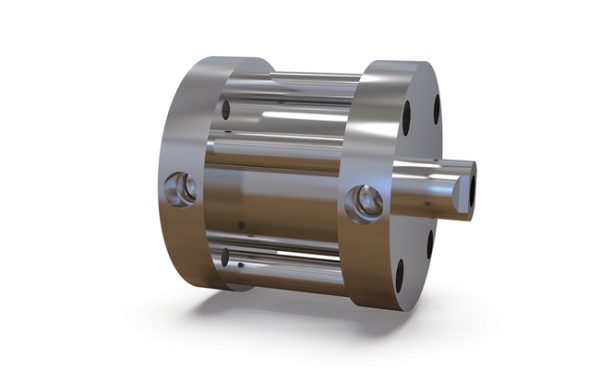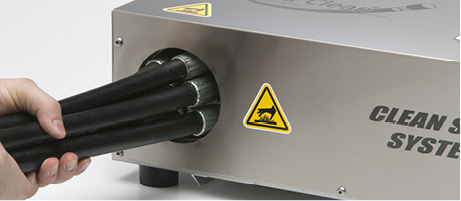Implementing Cutting-Edge Conveying Technology: A How-To Guide
Click on the images to enlarge.
In today’s business climate, food processing and packaging companies are responding to the growth in raw material and labor costs by looking for new ways to use faster and more efficient processes. Even a brief delay in design, production, or distribution can severely limit sales and profitability. Implementing cutting-edge solutions allows companies to use a hands-off approach where humans had previously been required. They can then reallocate personnel to other areas of their businesses. One area where this type of implementation has the largest return on investment is in the conveying process. The conveying process has emerged as a particular area of focus because labor costs, speed, and efficiency are drastically affected with the implementation of one specific automation process: the multiposition cylinder. The pneumatic multiposition cylinder (MPC) is an actuator whose function reduces labor costs while increasing speed and efficiency.
Infinite Number of Adjustable Stroke Positions
The heart of the MPC is the ability to provide unlimited actuator positions while requiring only an analog input, 24-Vdc power, and pressure. In the past, electric and hydraulic actuators were the only options for applications demanding an infinite number of stroke positions. These actuators are not always the best solution due to the expense and the likelihood of shock-type loading, which electric actuators are not always able to withstand. This cutting-edge technology now provides a cost-effective and highly efficient alternative.
Using a 4-20 mA or 0-10 Vdc input signal, the actuator stroke adjusts automatically. For example, for a 100-mm stroke, sending a 5-Vdc input signal on the 0-10 Vdc type will extend the MPC by 50 mm. Once the MPC reaches the desired position, it is pneumatically locked until the input signal is changed. By opening and closing the integrated valves, it will keep the target position. If the position changes due to an external force, it will automatically return to the desired position.
In order to accomplish this, the MPC utilizes an integrated cylinder, solenoid valve, linear sensor, and controller (Fig. 1). The controller receives position information from the linear displacement sensor. The controller takes the analog input signal and controls the actuator position with a series of valve shifts to either supply air or exhaust air to the actuator. When the piston reaches the desired position, the controller shifts the valves to capture pressure on both sides of the piston. This pneumatically locks the actuator in the desired position effectively. There is also a 1-5 Vdc output signal that confirms the desired set point is reached and held.
How It Saves Money
- Decreased labor costs – The MPC performs automatically what has historically been completed by a manual method. In conveyor systems of any size, this can be a labor-intensive job. The manual method increases change over time and downtime. The labor savings experienced are due to a simple, automatic system offered by the MPC (Fig. 2).
- Lower machine costs – With an integrated valve and linear displacement sensor, additional valves and position sensors are not required.
- Simple set up – All that is needed is supply pressure, an analog input signal, and a power supply. The MPC takes care of the rest.
- Decreased change management – When updates and changes are easy to make, they take less time. MPC enables on-the-fly updates. Further, because you supply the input signal, position is repeatable within 1 mm.
Decreased Complexity
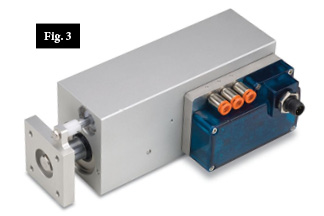 The ease of installation and the ability to make changes quickly and easily increase line efficiency. When compared to alternative solutions, such as electric actuators, the simplicity of the MPC is clear: limited upfront requirements and ease of installation (Fig. 3).
The ease of installation and the ability to make changes quickly and easily increase line efficiency. When compared to alternative solutions, such as electric actuators, the simplicity of the MPC is clear: limited upfront requirements and ease of installation (Fig. 3).
- To initiate action, input pressure, a 24-Vdc power supply, and an analog input signal are the only requirements. A 1-5 Vdc output signal confirms when the position is reached.
- To mount, four mounting holes on the bottom of the unit and four on the front plate are available. Electrical connection is accomplished with an M12 – 4 pin quick connect.
- Three ports, fitted with 0.25″ quick-connect fittings, are the final connection point: one for supply pressure, one for air exhaust, and one for system venting.
- Simple inputs allow for changes to be made with a push of a button.
The ability to make changes results in a more efficient system. In an air conveying system, an air conveyor blows air under aluminum cans. In order for the air conveyor to function, the height of ceiling must change when different size cans advance into the conveyor. In a traditional system, a three-position cylinder is used. This cylinder allows for the adjustment of only three types of cans. With an infinite number of can heights available, the flexibility of the conveyor line is greatly increased (Fig. 4).
Lowered Upfront and Ongoing Component Costs
With applications requiring multipositioning of the cylinder, there are limited alternatives to electric actuators. With an entry cost of under $500, MPC is highly economical and easier to set up and maintain.
For example, in Fig. 5, a typical pneumatic method is shown in a conveyor lane diverter, consisting of a pneumatic brake cylinder with multiple position sensors mounted to the actuator. When the piston is in the proper position, the position sensor is triggered to send a signal to a valve. The valve shifts to engage the brake, which holds the cylinder in position. Manual labor is needed to ensure constant and consistent accuracy with this solution.
Next Steps
A single update in machinery can dramatically affect output and costs. With the ability to provide multipositions pneumatically, the MPC now offers an inexpensive alternative to electric actuation.
Share this information.
Related Posts
Get Our Enews!
Fluid Power Journal Resources

